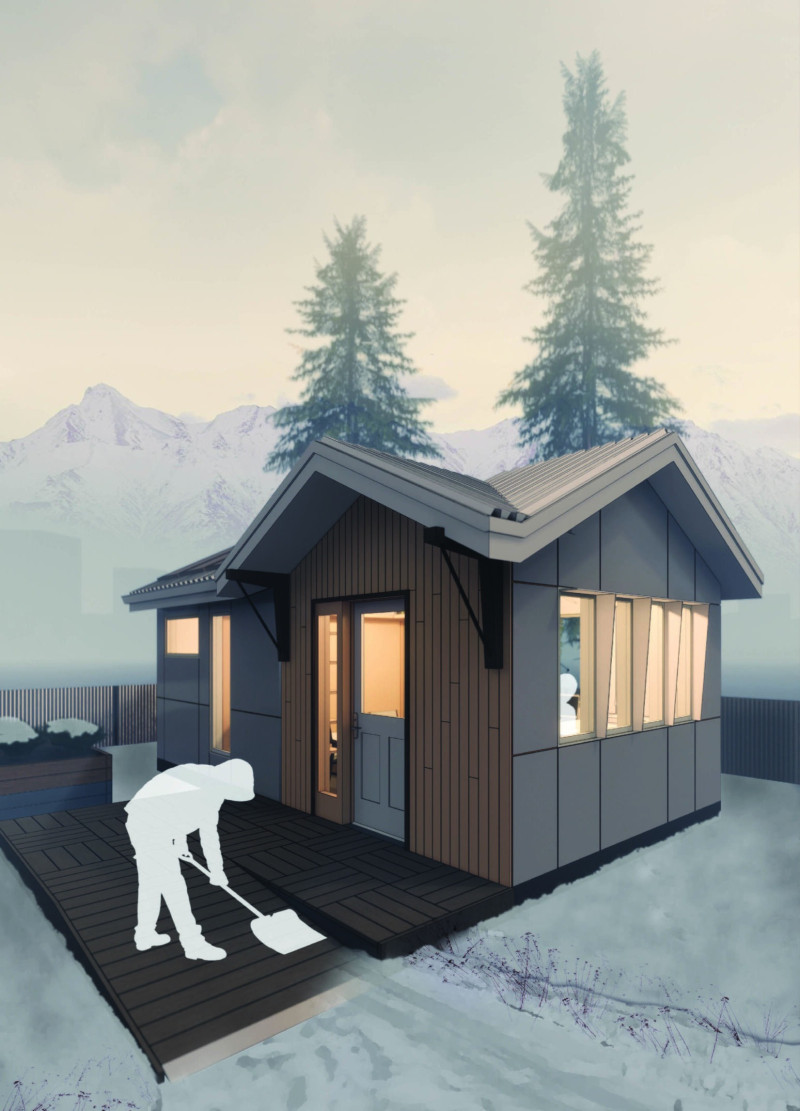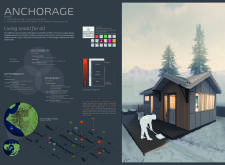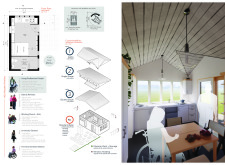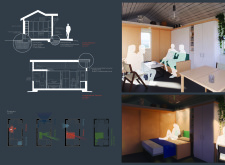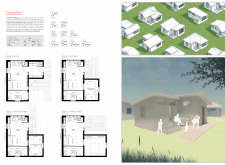5 key facts about this project
With a primary function of providing affordable and accessible housing, the ADUs are designed to accommodate various demographics, including young professionals, families with children, and retirees. These small yet versatile living units offer the potential for a range of configurations, allowing inhabitants to personalize their living experience based on specific requirements. The emphasis on accessibility ensures that the units can be navigated easily, catering to individuals with different mobility needs. Open floor plans are a hallmark of this design, making efficient use of space while fostering a sense of community among residents.
The unique design approaches taken in this project are evident in the architectural choices made to enhance both aesthetic appeal and performance. Structural Insulated Panels (SIPs) are employed as the primary building material, providing excellent insulation and reducing energy costs while allowing for rapid construction. This material choice not only reflects a commitment to sustainability but also aligns with the demand for efficient housing solutions that minimize environmental impact. The roofs utilize mineral fiberboard that promotes thermal efficiency while maintaining a lightweight structure, essential for the Alaskan climate.
Another notable aspect of the project is its focus on creating a community-oriented living environment. The layout encourages interactions among neighbors, with communal spaces that invite social connection, while still maintaining private areas that reflect personal living preferences. This thoughtful integration of public and private zones speaks to a more inclusive approach to community living, allowing for a blend of solitude and engagement among residents.
The ADUs also incorporate energy-efficient systems that align with modern sustainability practices. High-efficiency appliances and fixtures further minimize utility costs for residents, while solar photovoltaics provide an opportunity for renewable energy use. This forward-thinking approach not only addresses immediate housing needs but also sets a benchmark for future architectural developments focusing on longevity and resourcefulness.
The overall visual representation of the project communicates a sense of harmony with the surrounding landscape, utilizing natural materials and forms that integrate seamlessly with the Alaskan environment. The design respects the local context, recognizing the importance of creating structures that not only meet the needs of individuals but also contribute positively to the broader community fabric.
In sum, this architectural project signifies a meaningful step toward addressing housing challenges in Anchorage, utilizing innovative and sustainable design principles. By exploring the architectural plans, sections, and overall designs associated with this project, readers can gain a deeper insight into the thoughtful decisions that guide its development, reflecting a balanced, practical response to contemporary urban living dilemmas. This exploration of architectural ideas is pivotal for anyone interested in understanding how design can serve functional needs while promoting community well-being.


